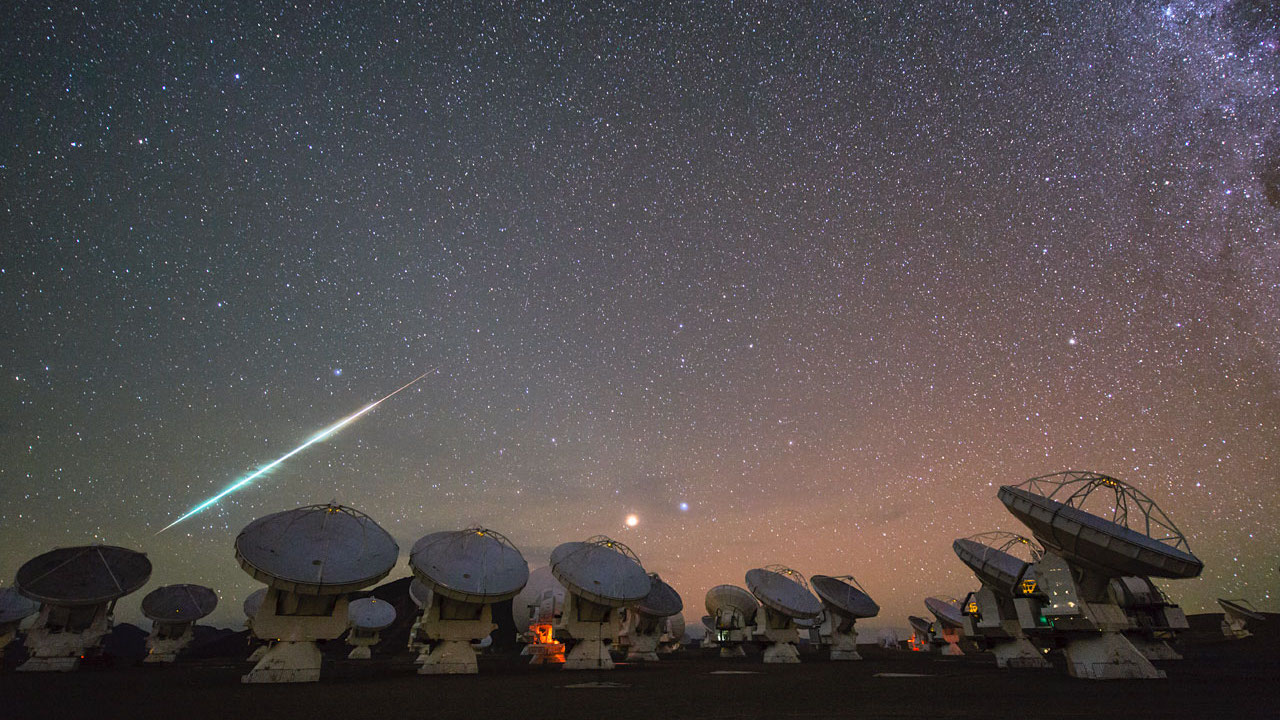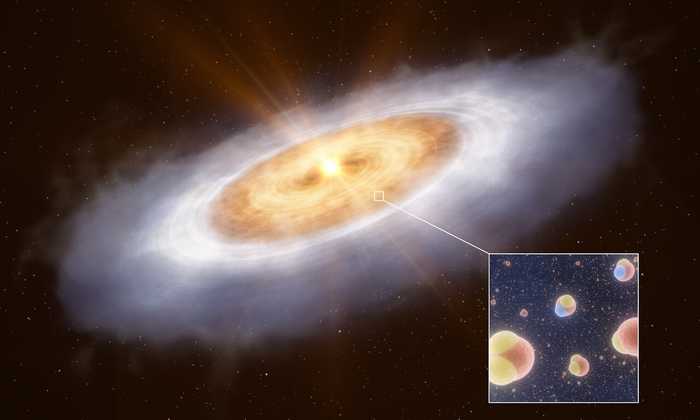'Missing link' for Earth's water found around remote baby star
Astronomers have spotted water that looks remarkably similar to our own in orbit around a young star 1,300 light years from Earth.

Astronomers studying a remote baby star have found a "missing link" that could finally explain the origins of water on Earth, a new study suggests.
By training a powerful radio telescope at V883 Orionis, a protostar 1,300 light-years away from Earth in the constellation Orion, astronomers have spotted gaseous water with a chemical composition close to the one found in comets around Earth. This is vital evidence that water delivered by comets to ancient Earth came from gas clouds older than the sun.
Astronomers previously observed water moving from gas clouds to planet-forming disks around young stars, and then later from comets to planets. But the missing link in the chain — the step from young stars to comets — has proven elusive. Now, in new findings published Mar. 8 in the journal Nature, researchers have finally filled in the blank.
Related: 4.6 billion-year-old meteorite may reveal the origin of Earth's water
"V883 Orionis is the missing link in this case," lead author John J. Tobin, an astronomer at the National Radio Astronomy Observatory, in Charlottesville, West Virginia, said in a statement. "The composition of the water in the disc is very similar to that of comets in our own solar system. This is confirmation of the idea that the water in planetary systems formed billions of years ago, before the Sun, in interstellar space, and has been inherited by both comets and Earth, relatively unchanged."

Stars find their beginnings in gigantic clouds of dust and gas which slowly collapse, heating up as they coalesce. Once a protostar has begun taking shape, the leftover building blocks from the cloud form a disk around the new star, clumping together over millions of years to form comets, asteroids and planets. Once a planet has formed, water from the planetary disk — now frozen inside millions of comets — pelts the new world like cosmic snowballs.
To find evidence that water from star-forming clouds was freezing into comets inside planetary discs, the researchers used the Atacama Large Millimeter/submillimeter Array (ALMA), an array of 66 radio telescopes in northern Chile, to spot the telltale radiation emitted by gaseous water found at the inner part of the disc around V883 Orionis.
Get the world’s most fascinating discoveries delivered straight to your inbox.
Water usually consists of one oxygen atom bound with two hydrogen atoms, but can exist in two variants, known as semi-heavy and heavy water, that swap out one or both of the hydrogen atoms for deuterium — an isotope, or version, of hydrogen that has a neutron in its nucleus in addition to the usual proton. As the simple and semi-heavy water found around star systems form under different conditions, finding the ratio of the two can help trace water's movements across the star system.
Measuring the ratio of simple to semi-heavy water found around V883 Orionis revealed a similar chemical composition to comets in our solar system, strongly suggesting that the water in the disk would later freeze and clump to form comets. By charting the distribution of the water suspended around the young star, the researchers found the planetary disk contains at least 1,200 times the amount of water in Earth's oceans.
"We conclude that disks directly inherit water from the star-forming cloud and this water becomes incorporated into large icy bodies, like comets, without significant chemical alteration," the researchers wrote in the study.
Now that they've found the first evidence for the missing step in water's journey from the cosmos to the surface of planets, the researchers plan to study the system in more detail with the European Space Observatory's Extremely Large Telescope (ELT) — which is scheduled to make its first observations in 2028.

Ben Turner is a U.K. based writer and editor at Live Science. He covers physics and astronomy, tech and climate change. He graduated from University College London with a degree in particle physics before training as a journalist. When he's not writing, Ben enjoys reading literature, playing the guitar and embarrassing himself with chess.


